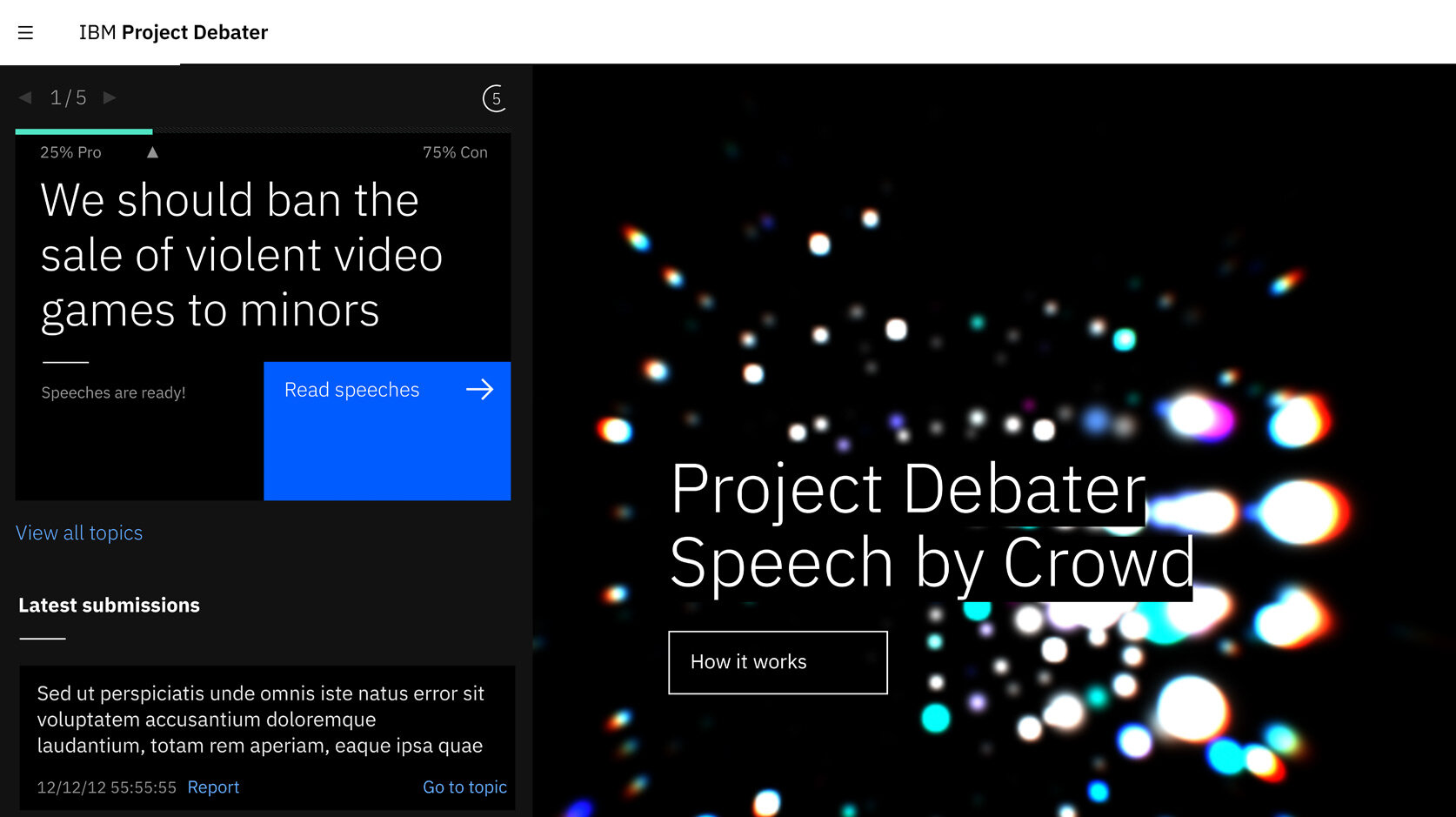
IBM has a Project Debater AI system that can debate humans on complex topics. A recent event to showcase its capabilities turned into pure drama as the machine proceeded to throw AI under the bus as it took both con and pro positions as to whether or not AI is harmful to humans.
Just stop and think about the premise: A robot can be capable of debating complex topics. What a great idea for an off-Broadway play. A sci-fi movie that wins an Oscar for the human, or maybe for the robot. At the least, a funny commercial for the next Super Bowl commercial break.' Only it was none of these.
A robot debating a human about the dangers of artificial intelligence was the focus of a real event on Nov. 21 at the world's oldest debating society, the Cambridge Union in the UK. The topic of the debate was exactly that: the threat posed, if any, by artificial intelligence. The 300-strong audience was a "rather typical" turnout, said an article in the Medium account of Inside IBM Research.
The star of the show was not a world name such as Margaret Thatcher or the Dalai Lama but rather a machine with blue lights. The robot at center stage was IBM's Project Debater.
So, it took the side of arguing against the danger, right? Wrong. It argued both sides as onlookers stared and heard its two opening statements: first, arguing in favor of AI, and then, against AI. The robot had been given arguments drawn from over 1,100 human submissions in preparation for the debate, said New Scientist, and it was analyzing arguments that people had sent in online.
Jeremy Kahn in Fortune: "After Project Debater presented the opening case for each side at the start of the debate, it was up to the humans on the two teams to elaborate on these points and rebut counter-arguments."
New Scientist talked about the con arguments. The robot tried to do itself in: (1) It told the audience on the con side that AI can cause a lot of harm as it was unable to make a morally correct decision—morality was unique to humans. Another fault was that (2) AI was only as fair as the humans feeding it and AI could suffer from human bias. Additionally, (3) "AI companies still have too little expertise on how to properly assess datasets and filter out bias."
Which side of the debate finally swayed the audience? Donna Lu in New Scientist reported that the robot narrowly convinced audience members "that AI will do more good than harm." The team got 51.22 percent of the audience vote.
The article in Medium gave a full account of how the vote went down:
"As the debate ended, it was time for the audience to pick a winner. Instead of casting votes, the room suddenly filled with the whoosh of hundreds of people getting up at once. The audience had three doors to choose from to go through—a 'ayes' door in support of the proposition, a 'noes' door in support of the opposition, and 'abstain' door for those who were wavering. The narrow majority crowded in front of the noes door—meaning that they voted in favor of AI (the final tally: 48.17% ayes, 51.22% noes and 0.61% abstention)."
Underpinning Project Debater is technology that can sort the donated submissions from humans into key themes. The technology can also identify redundancy, said New Scientist, where submissions may have made the same point but just with different words.
This leads to an important point about the Cambridge Union event—IBM showcased a research feat that has a purpose other than mere entertainment. Its technology "speech-by-crowd AI" can be used as a tool for collecting feedback from large numbers of people, said New Scientist.
Speech-by-crowd technology makes it possible to collect free-text arguments from audiences and automatically deliver persuasive viewpoints whether to support or argue against a topic.
IBM engineer Noam Slonim, according to New Scientist, said the technology could help establish an "effective communication channel between the decision maker and the people that are going to be impacted by the decision."
Elsewhere on an IBM site, Slonim said the aim of his research was the development of Computational Argumentation technologies, an "exciting and rapidly emerging research field." He said together with a large team of researchers, they were developing "a combination of Machine Learning and NLP techniques in this context."
After chess and Watson, this might be the next grand challenge. Dr. Slonim in an interview earlier this year when he attended the AI for Good global summit in Geneva ,he said he had had this notion of a machine that could debate humans.
Do-able? They didn't know but they proceeded to work on it for six years.
IBM defines Project Debater as the first AI system that can debate humans on complex topics.
"Project Debater digests massive texts, constructs a well-structured speech on a given topic, delivers it with clarity and purpose, and rebuts its opponent. Eventually, Project Debater will help people reason by providing compelling, evidence-based arguments and limiting the influence of emotion, bias, or ambiguity."
© 2019 Science X Network
Citation: AI debate machine argues with itself at Cambridge Union (2019, November 26) retrieved 26 November 2019 from https://techxplore.com/news/2019-11-ai-debate-machine-cambridge-union.html
This document is subject to copyright. Apart from any fair dealing for the purpose of private study or research, no part may be reproduced without the written permission. The content is provided for information purposes only.
